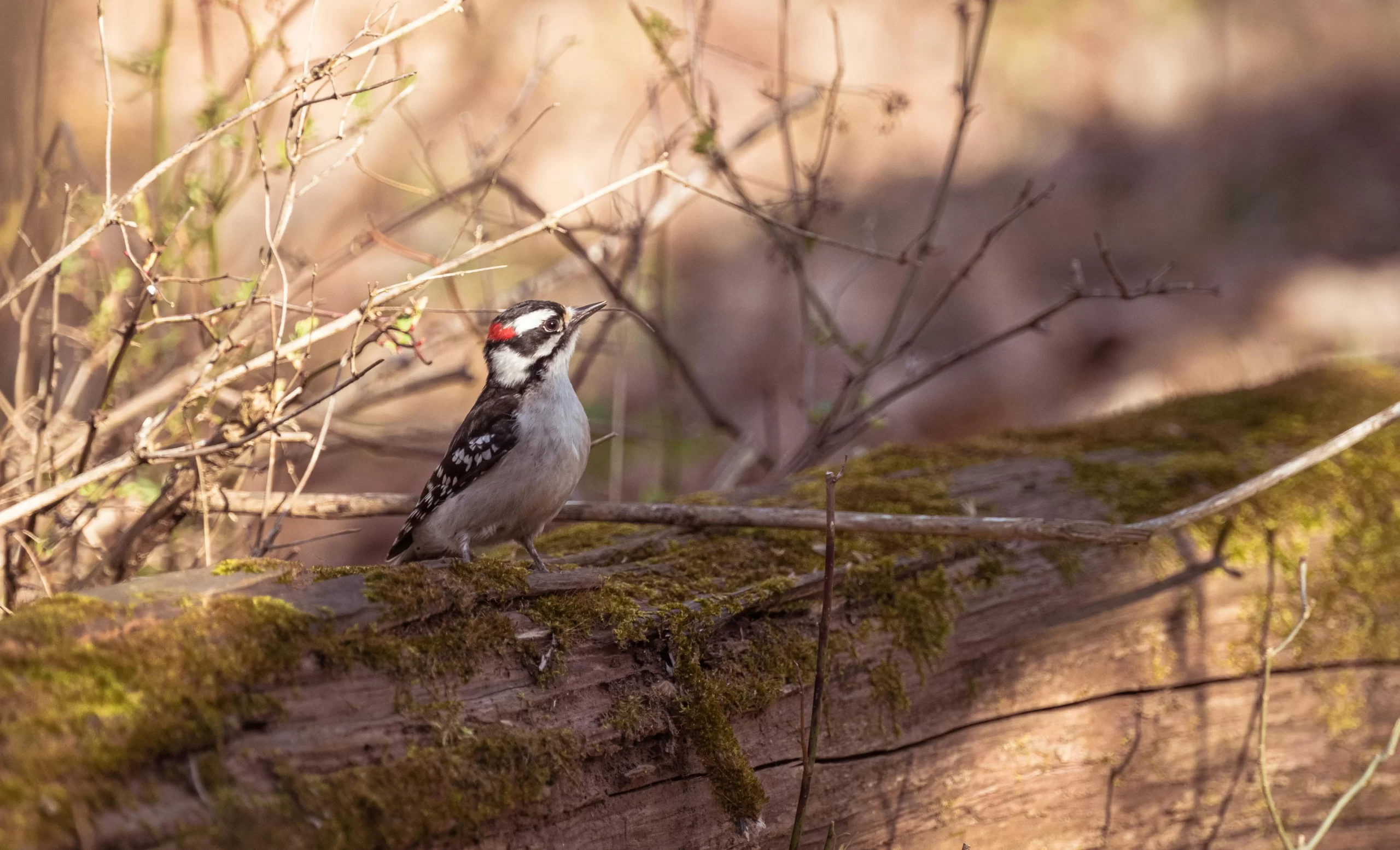Many are shocked to discover the extent to which Alabama is forested. Indeed, about 70% of the state is covered in trees. Much of the southern part of the state is covered in loblolly pine forests, while the northern part of the state begins to transition into the deciduous foothills of the Appalachian Mountains. While this forested habitat is not ideal for all birds, it is incredible for woodpeckers in Alabama.
Alabama woodpeckers are not the most diverse group of woodpeckers in the United States, but the state still hosts a respectable 8 woodpecker species regularly. If you are not yet familiar with the 8 types of woodpeckers in Alabama, don’t worry. By the end of this guide, you will feel like an Alabama woodpecker pro!
Table of Contents
8 Types of Woodpeckers In Alabama
Downy Woodpecker
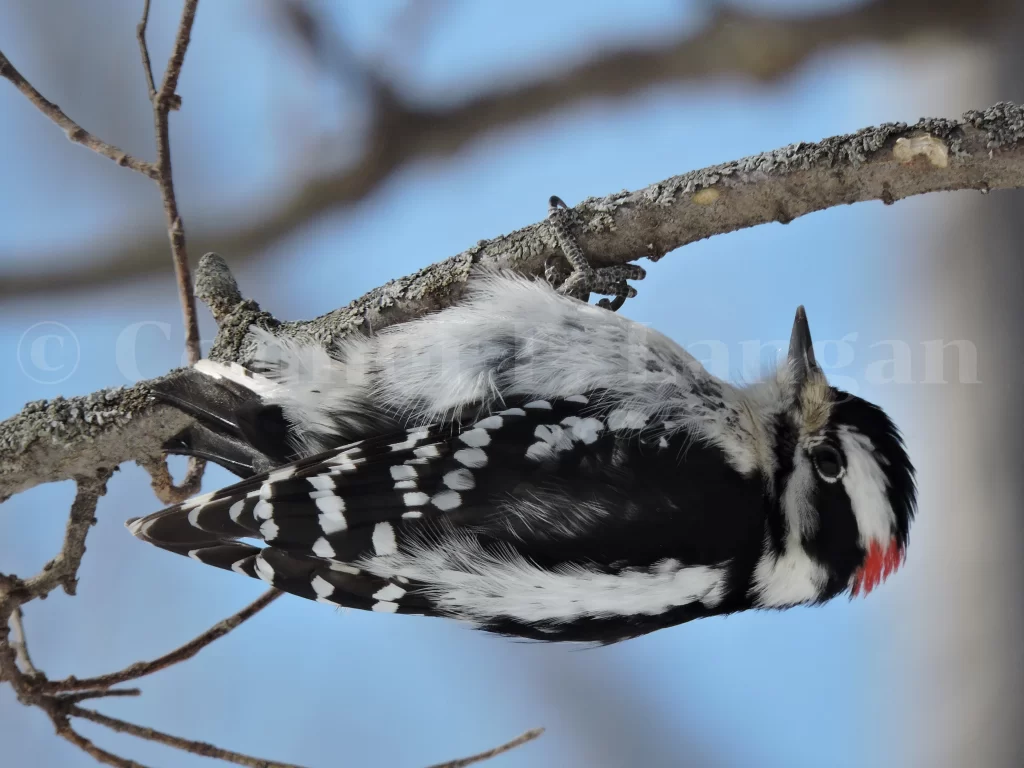
Downy Woodpeckers are familiar black and white birds in Alabama. They are the smallest of the woodpeckers in AL, and they can be found anywhere in the state at any time of year.
Downy Woodpeckers can make do with less forested habitat than most other woodpeckers. Of course, forests are not in short supply in Alabama. These woodpeckers of Alabama tend to have bigger populations in the northern half of the state, as they do a bit better in tracts of deciduous forest compared to pine forests.
Downy Woodpeckers are regular backyard birds, as these small black birds with white bellies frequently stop by bird feeders for a bite to eat. Birders can routinely find them in areas where woodpeckers wouldn’t traditionally be found. Parks, wooded neighborhoods, and windbreaks can all host this Alabama woodpecker. Downy Woodpeckers are common birds in Alabama, with more than 100,000 eBird checklists from the state containing this species.
Hairy Woodpecker
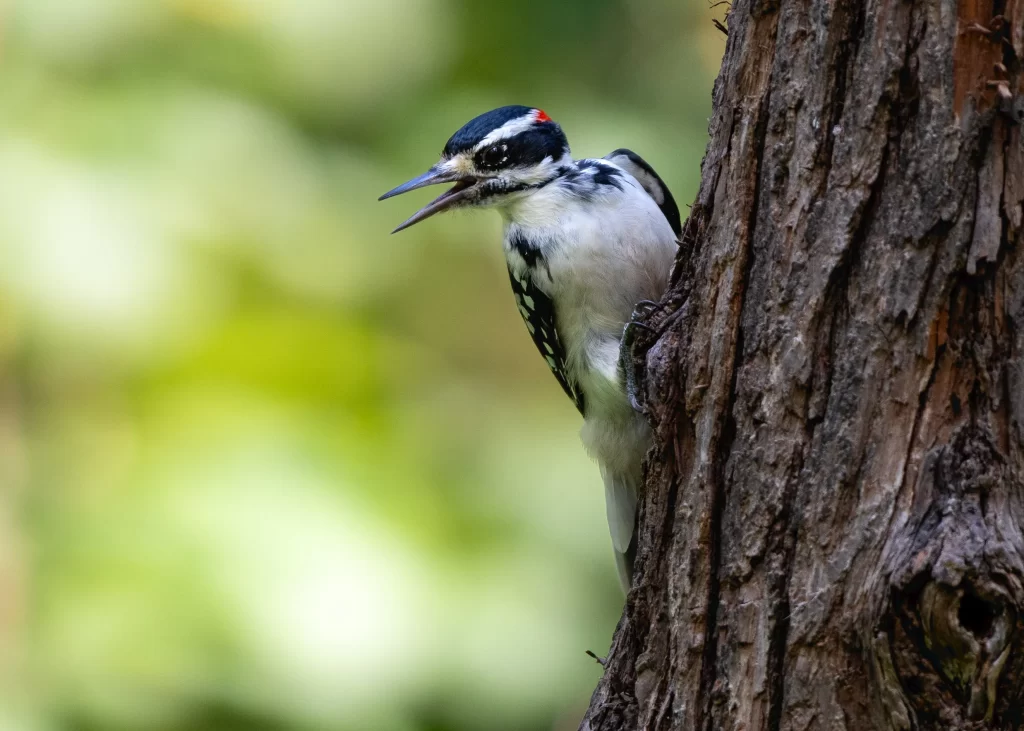
Hairy Woodpeckers look like large versions of Downy Woodpeckers with longer bills. However, they are not nearly as common as their smaller counterparts. Indeed, Alabama birders are almost 10 times more likely to observe a Downy Woodpecker compared to a Hairy Woodpecker.
Hairy Woodpeckers are not picky in their habitat preferences. They may be found in both deciduous or coniferous woodlands. These white and black birds in Alabama seem to be more common in the north half of the state, as they are reported here with more regularity.
Birders are not more likely to observe these Alabama woodpeckers at one time of year over another; Hairy Woodpeckers are uncommon in the state no matter the season. Placing a suet feeder in a yard is often a good way of seeing one.
Northern Flicker
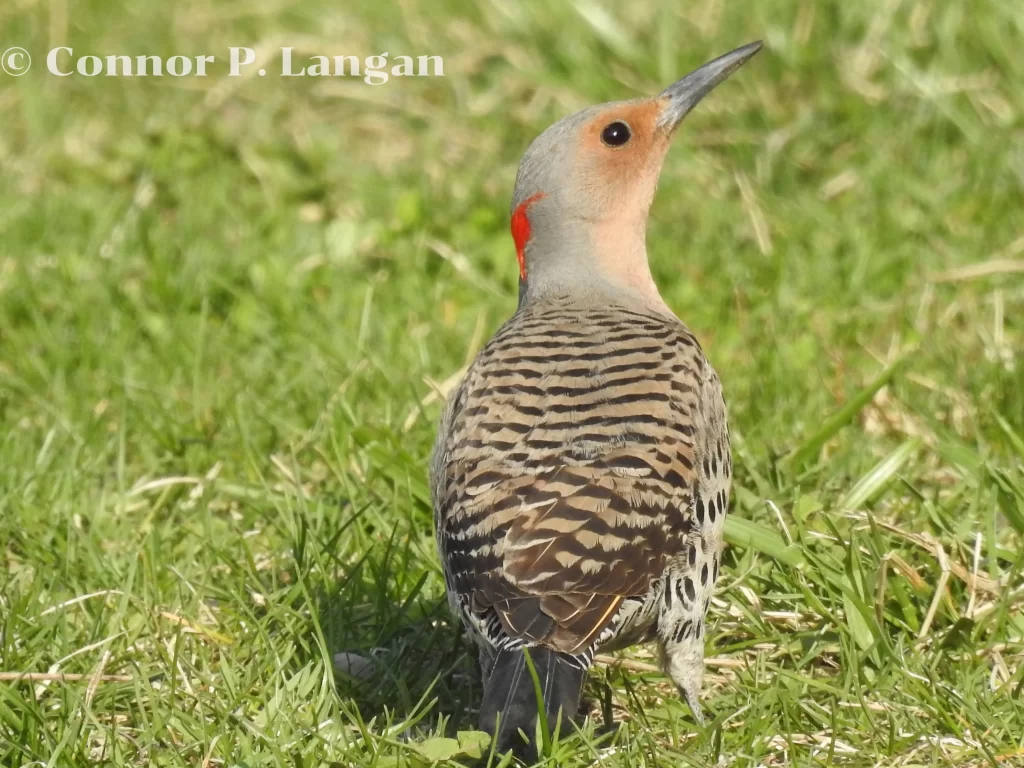
Northern Flickers are fairly big birds in Alabama. A flash of yellow feathers fleeing from a tree is often an indication that you just observed one. Northern Flickers are one of three migrant woodpeckers in Alabama, with numbers being lowest in the summer.
Alabama is a great state for these brown woodpeckers during the winter, as it offers plenty of shelter and food. However, the breeding conditions are often better elsewhere, so many Northern Flickers fly north in spring. Nevertheless, thousands of these woodpeckers of Alabama remain to breed.
These woodpeckers in Alabama have some strange habits for a woodpecker. For instance, they regularly hop along the ground as they look for insects. Northern Flickers can thrive in any open wooded areas that feature dead trees.
Pileated Woodpecker
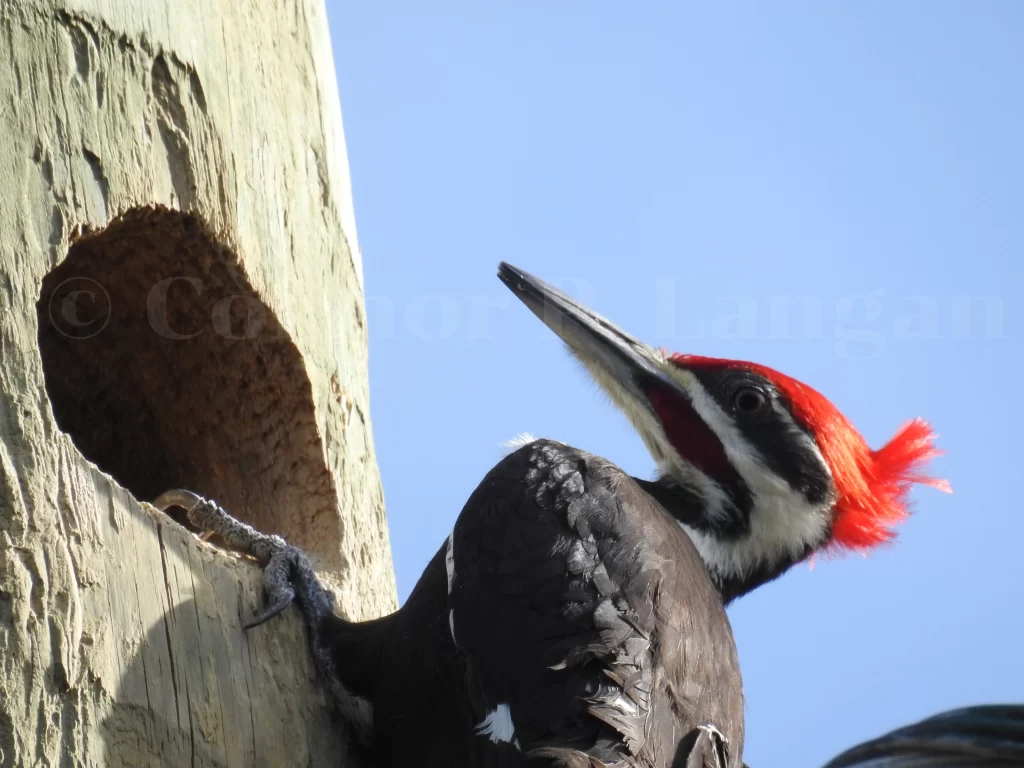
Pileated Woodpeckers are the largest Alabama woodpeckers. Seeing one of these crow-sized creatures is an unforgettable experience. Fortunately, these large woodpeckers in Alabama are fairly easy to find, as they are observed the third-most frequently in the state as per eBird data.
Pileated Woodpeckers make themselves at home in sizable chunks of forested habitat. If urban areas have dense concentrations of trees, then this woodpecker in Alabama may habituate itself to these environments – some Pileated Woodpeckers may even visit suet feeders!
These large birds in Alabama are nonmigratory, and there does not seem to be one part of the state where they are more common than other parts. Listen for their laugh-like calls if you’re struggling to locate one by sight.
Red-bellied Woodpecker
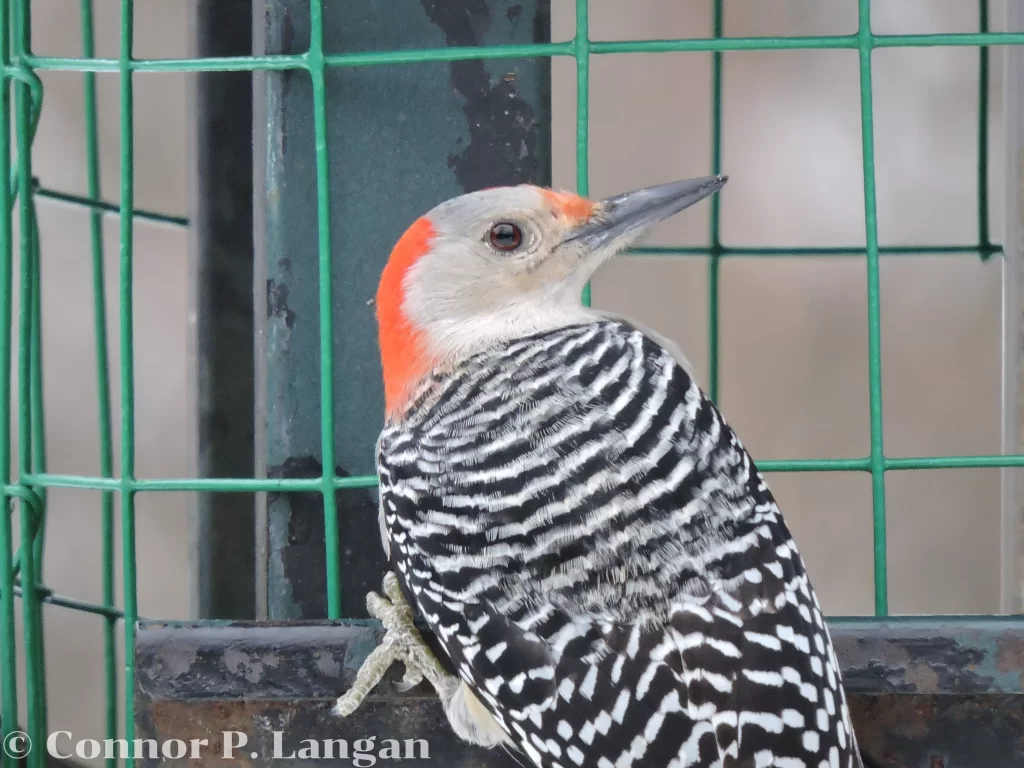
Red-bellied Woodpeckers are the most common woodpeckers of Alabama, with more than 140,000 eBird checklists containing these creatures. They are abundant no matter where one travels in Alabama, and there are no seasons in which they’re easier to observe than others.
This Alabama Woodpecker owes much of its success to its adaptability. Indeed, Red-bellied Woodpeckers thrive in the loblolly pine forests that cover much of the state, but they also flourish in the Appalachian foothills of northern Alabama.
If you don’t have any forests in your area, there’s a good chance that these woodpeckers in AL can be found at your nearest park, windbreak, or woodlots. Determining the male of a pair of woodpeckers is simple thanks to the male’s entirely red hood.
Red-cockaded Woodpecker
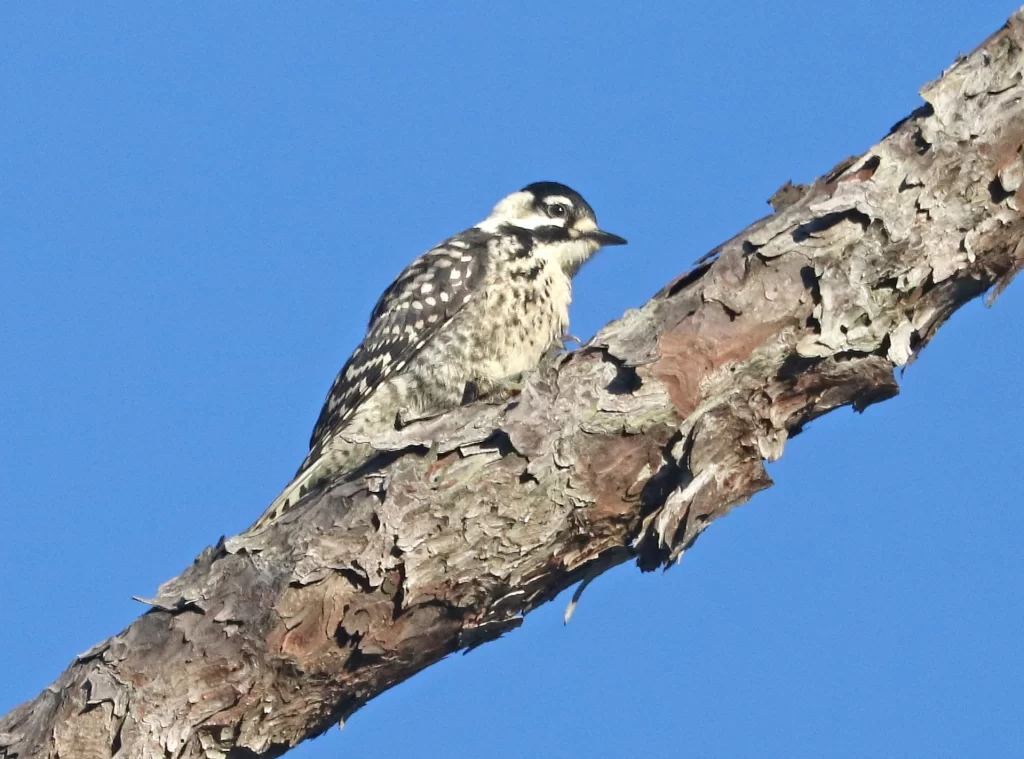
Red-cockaded Woodpeckers are rare woodpeckers in Alabama. Indeed, only about 750 checklists have been submitted to eBird that contain observations of this species. Moreover, they are very localized, so birders have to target specific areas known to host Red-cockaded Woodpeckers if they hope to observe one of these near-threatened southern birds.
Although Red-cockaded Woodpeckers used to be distributed throughout the state, they are primarily South Alabama woodpeckers at this point. Red-cockaded Woodpeckers have evolved to thrive in specialized open pine woodlands that were historically created by fires.
Here are some good places to find Red-cockaded Woodpeckers in Alabama:
- Choccolocco Wildlife Management Area
- Talladega National Forest (Oakmulgee District)
- Coosa Wildlife Management Area
- Conecuh National Forest
Red-headed Woodpecker
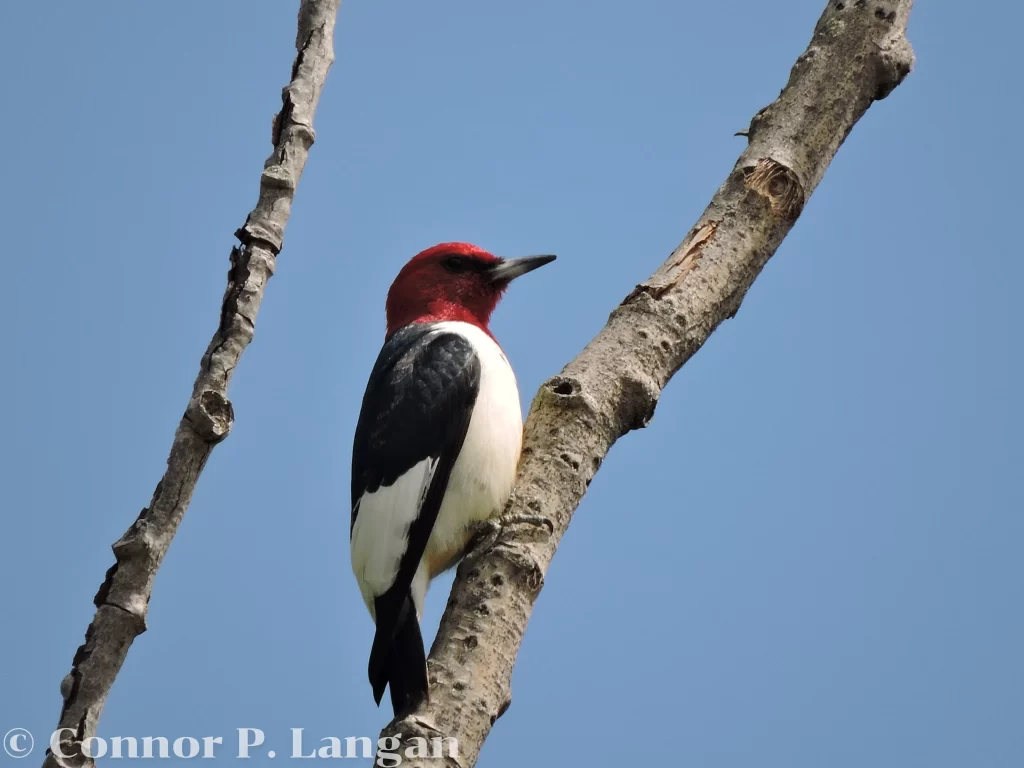
Those who wish to observe a Red-headed Woodpecker in Alabama should investigate areas that are more open compared to those where other woodpeckers can be found.
Look for these types of woodpeckers in Alabama in open pine or mixed woodlands. They are also regularly found along forest edges where they may perch on utility poles. Here, they are often seen flying out from their perches to capture insects.
A small number of Red-headed Woodpeckers leave Alabama to breed elsewhere during the summer, but overall numbers remain relatively unchanged during this time. Red-headed Woodpeckers are social Alabama woodpeckers, and they are rarely alone.
Yellow-bellied Sapsucker
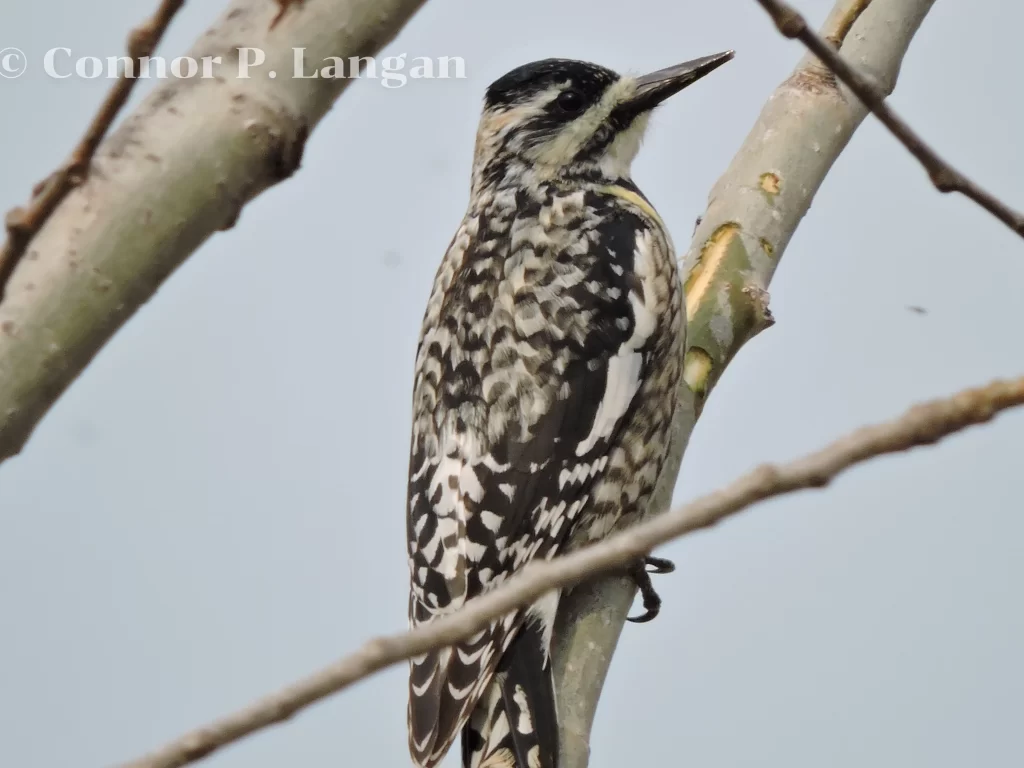
Yellow-bellied Sapsuckers are a species of woodpecker with an entirely migratory population in Alabama. Here, these birds arrive in October and depart by April during the following spring.
Yellow-bellied Sapsuckers are rather common during the time in which they occupy the state. They may be found in an assortment of wooded habitats such as forests, cemeteries, or woodlots.
If you see a tree that has a bunch of small holes drilled into neat rows, then a Yellow-bellied Sapsucker was the culprit. These birds drill hundreds of sap wells so they can harness the sap from trees and draw insects to this resource. Don’t worry, these holes don’t kill trees, they merely wound them for sapsuckers can take advantage of insects attracted to the sap.

